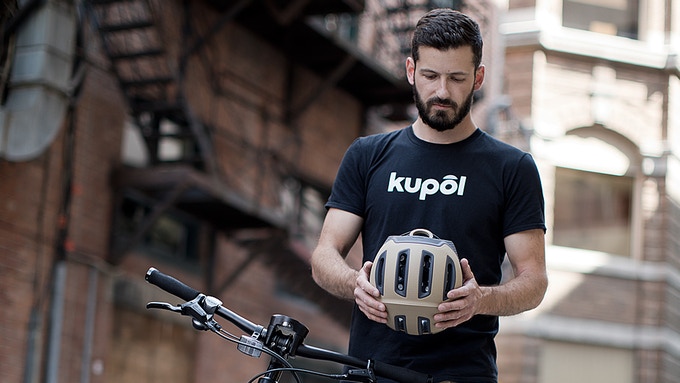![[Image: kupol]](https://fabbaloo.com/wp-content/uploads/2020/05/kupol3_img_5eb0a60b60844.jpg)
Helmets are imperative for head protection — but only when they work.
There are a number of reasons a helmet might not provide enough protection, from the glaringly obvious (not wearing one) to the more scientific (designs protecting from perpendicular, rather than oblique, collisions). 3D printing is helping to rethink head protection through innovation in helmets, which as it turns out have a great deal more to their design than simply being a generally harder hat with a chin strap.
From HelmetHair that inspires kids to wear their helmets to the clever design of the kupol helmet, which we first saw earlier this summer, these protective devices are increasingly taking advantage of 3D printing.
For kupol’s part, the rethinking goes deep — into every part of the helmet design. Especially interesting is the KOLLIDE Safety System, which leverages 3D printing to create a safe, cool, comfortable experience that will actually protect against injury for the types of impacts most common among cyclists.
The company uses HP’s Multi Jet Fusion 3D printing systems to create its unique helmets, featuring lighter weight and superior functionality than traditional protective headwear. Service bureau Sculpteo, an early adopter of MJF technology, helped bring the helmets to life.
Quebec-based kupol has just launched a Kickstarter campaign to bring its helmets toward commercialization. Well on the way toward its CA$100,000 goal with more than a month left in the campaign, the Kickstarter is targeting a February certification and March production ahead of beginning shipping in late May.
Regarding that all-important certification step, the company notes in the campaign:
“Once we reach our funding goal, we will perform the final optimization of the overall design and begin the manufacturing process. With the pre-production units in hand we will have the helmet certified by the North American (CPSC) and European (CE) product safety certification bodies.”
The helmet redesign was centered around three primary areas: safety, comfort, and aeration. Safety and comfort may seem like obvious factors for a helmet, but aeration cannot be left out of the equation. While it sounds more a step for a fine wine than for head protection, accounting for air reduces the buildup of sweat and heat so the wearer can remain cool-headed (and want to put the helmet on again later, sans sweat or body odor).
When looking toward 3D printing-related Kickstarter campaigns, there are definitely some important considerations to keep in mind — and we have a handy checklist for what some of those factors are — as crowdfunding always carries a buyer-beware undertone. For kupol, though, “the choice of where to launch our product was easy” they say, as the all-or-nothing funding is a driving force for the team. They’re optimistic in their ability to reach their financial target and, from contact we’ve had with them, confident in the product they’re looking to deliver.
Via kupol and Kickstarter











Healthcare 3D printing attempts to solve two problems that plague providing care: customization and cost.